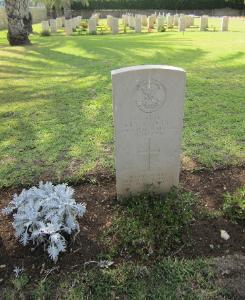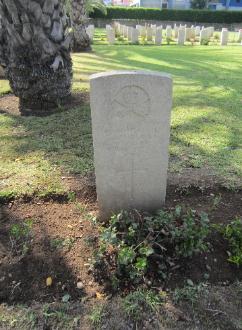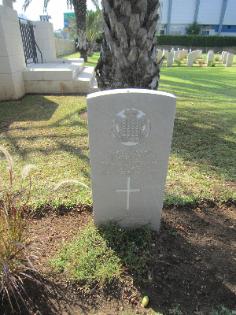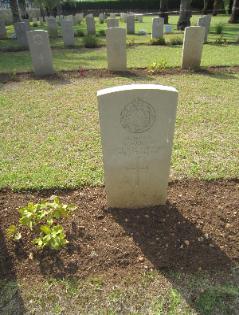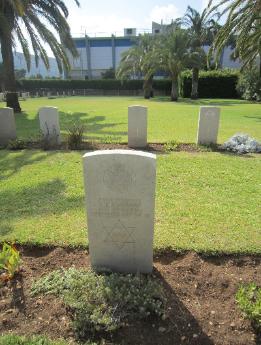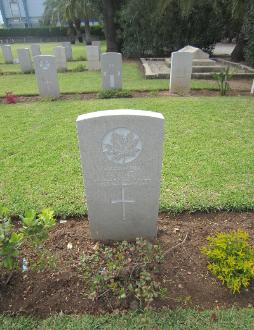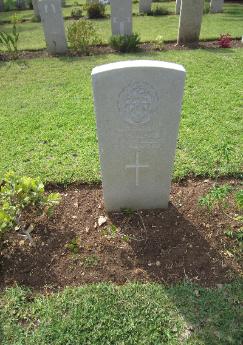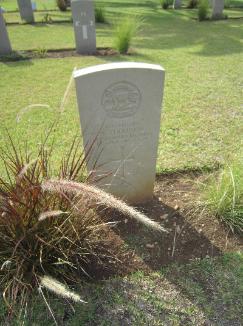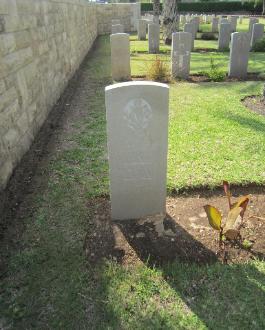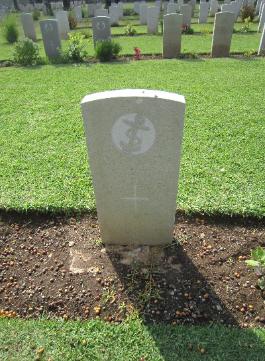World War I next to Haifa
During the First World War the entire bay area was placed under a sea blockade and
mined by the Turks.Haifa was hit by the First World War, especially as a result of the
cessation of all economic and commercial activities prevailing at that time. This was a
time of great poverty and famine in the North of Palestine.
In contrast to several other cities and settlements in Israel, there was no actual great
physical destruction which took place in Haifa. The battle which was fought to gain
control of the city ceased after a couple of days, without causing any severe destruction
or killing.
On the 23rd September, 1918, the British took over the control of the city which was
captured by the Mysore and Jodhpur Lancers
Many soldiers are buried in Commonwealth cemeteries in Israel and also in Haifa
mined by the Turks.Haifa was hit by the First World War, especially as a result of the
cessation of all economic and commercial activities prevailing at that time. This was a
time of great poverty and famine in the North of Palestine.
In contrast to several other cities and settlements in Israel, there was no actual great
physical destruction which took place in Haifa. The battle which was fought to gain
control of the city ceased after a couple of days, without causing any severe destruction
or killing.
On the 23rd September, 1918, the British took over the control of the city which was
captured by the Mysore and Jodhpur Lancers
Many soldiers are buried in Commonwealth cemeteries in Israel and also in Haifa
Australia-Israel Chamber of Commerce
ANZAC site
New Zealand History
Australian war memorial
Australian and New Zealand mounted division
Commonwealth war graves commission, CWGC
CWGC project
The desert mounted corps
Great war Forum
ANZAC site
New Zealand History
Australian war memorial
Australian and New Zealand mounted division
Commonwealth war graves commission, CWGC
CWGC project
The desert mounted corps
Great war Forum
from the CWGC project
HAIFA (SHARON) BRITISH CIVIL CEMETERY
Location Information: This cemetery runs along the northern side of Khayat
Beach War Cemetery. The cemetery lies 5 kilometres south-west of Haifa, on the
Tel-Aviv highway. From the main Tel-Aviv highway No. 2, join road No. 4. After
500 metres, the cemetery will be found on the right hand side but is hidden from
view behind a wall. The entrance is the second gate along this wall.
Historical Information: Haifa was of great strategic importance during the
Second World War because of its deep water harbour and airfield. It was also the
terminus of the railway line from Egypt and of the Kirkuk-Haifa oil pipeline. Haifa
became one of the main supply bases and arms depots serving the Middle East
forces and a large naval depot was established at Haifa Bay. This civil cemetery
contains 70 Commonwealth burials of the Second World War. There are also 25
non-war burials, all from the Palestine Police Force, and one Dutch war grave.
No. of Identified Casualties: 96
HAIFA (JAFFA ROAD) CEMETERY
Location Information: Haifa (Jaffa Road) Cemetery is situated at the rear of
Haifa Indian Cemetery. Haifa (Jaffa Road) Cemetery lies 3 kilometres from the
central railway stration on the Tel-Aviv road. From the south on highway 4, the
cemetery is on the left hand side, just before shops and the Haifa docks. 300 metres
after the cemetery turn left into Dugit Street. At the traffic lights turn left and the
cemetery will now be on the right hand side, 300 metres after the lights.
Historical Information: Haifa (Jaffa Road) Cemetery contains 36 non-war
burials in the care of C.W.G.C.
No. of Identified Casualties: 36
HAIFA INDIAN CEMETERY
Visiting Information: Wheelchair access to the cemetery is possible via main
entrance. For further information regarding wheelchair access, please contact our
Enquiries Section on telephone number 01628 507200.
Location Information: The cemetery is located next to Haifa War Cemetery. Haifa
Indian Cemetery lies 3 kilometres from the central railway station on the Tel-Aviv
road. From the south on Highway 4, the cemetery is on the left hand side, just
before shops and Haifa docks. 300 metres after the cemetery turn left into Dugit
Street. Turn left at the traffic lights and the cemetery will now be on the right hand
side, 300 metres after the lights.
Historical Information: Haifa was captured by the Mysore and Jodhpur Lancers on
23 September 1918 and the 33rd Combined Clearing Hospital was moved to the
town on 15 October. The cemetery continued in use until October 1920. Haifa
Indian Cemetery contains the graves of 49 Commonwealth servicemen of the First
World War.
No. of Identified Casualties: 46
HAIFA JEWISH CEMETERY
Location Information: The Cemetery is on the main Tel-Aviv road, 500 metres
north of Haifa War Cemetery. The Cemetery is on the left side of the road when
heading north, just before the entrance to Haifa docks.
Historical Information: Haifa was captured by the Mysore and Jodhpur
Lancers on 23 September 1918 and the 33rd Combined Clearing Hospital was
moved to the town on 15 October. Haifa Jewish Cemetery contains one
Commonwealth burial of the First World War.
No. of Identified Casualties: 1
HAIFA (SHARON) BRITISH CIVIL CEMETERY
Location Information: This cemetery runs along the northern side of Khayat
Beach War Cemetery. The cemetery lies 5 kilometres south-west of Haifa, on the
Tel-Aviv highway. From the main Tel-Aviv highway No. 2, join road No. 4. After
500 metres, the cemetery will be found on the right hand side but is hidden from
view behind a wall. The entrance is the second gate along this wall.
Historical Information: Haifa was of great strategic importance during the
Second World War because of its deep water harbour and airfield. It was also the
terminus of the railway line from Egypt and of the Kirkuk-Haifa oil pipeline. Haifa
became one of the main supply bases and arms depots serving the Middle East
forces and a large naval depot was established at Haifa Bay. This civil cemetery
contains 70 Commonwealth burials of the Second World War. There are also 25
non-war burials, all from the Palestine Police Force, and one Dutch war grave.
No. of Identified Casualties: 96
HAIFA (JAFFA ROAD) CEMETERY
Location Information: Haifa (Jaffa Road) Cemetery is situated at the rear of
Haifa Indian Cemetery. Haifa (Jaffa Road) Cemetery lies 3 kilometres from the
central railway stration on the Tel-Aviv road. From the south on highway 4, the
cemetery is on the left hand side, just before shops and the Haifa docks. 300 metres
after the cemetery turn left into Dugit Street. At the traffic lights turn left and the
cemetery will now be on the right hand side, 300 metres after the lights.
Historical Information: Haifa (Jaffa Road) Cemetery contains 36 non-war
burials in the care of C.W.G.C.
No. of Identified Casualties: 36
HAIFA INDIAN CEMETERY
Visiting Information: Wheelchair access to the cemetery is possible via main
entrance. For further information regarding wheelchair access, please contact our
Enquiries Section on telephone number 01628 507200.
Location Information: The cemetery is located next to Haifa War Cemetery. Haifa
Indian Cemetery lies 3 kilometres from the central railway station on the Tel-Aviv
road. From the south on Highway 4, the cemetery is on the left hand side, just
before shops and Haifa docks. 300 metres after the cemetery turn left into Dugit
Street. Turn left at the traffic lights and the cemetery will now be on the right hand
side, 300 metres after the lights.
Historical Information: Haifa was captured by the Mysore and Jodhpur Lancers on
23 September 1918 and the 33rd Combined Clearing Hospital was moved to the
town on 15 October. The cemetery continued in use until October 1920. Haifa
Indian Cemetery contains the graves of 49 Commonwealth servicemen of the First
World War.
No. of Identified Casualties: 46
HAIFA JEWISH CEMETERY
Location Information: The Cemetery is on the main Tel-Aviv road, 500 metres
north of Haifa War Cemetery. The Cemetery is on the left side of the road when
heading north, just before the entrance to Haifa docks.
Historical Information: Haifa was captured by the Mysore and Jodhpur
Lancers on 23 September 1918 and the 33rd Combined Clearing Hospital was
moved to the town on 15 October. Haifa Jewish Cemetery contains one
Commonwealth burial of the First World War.
No. of Identified Casualties: 1
Meggido, September 22th, 1918
In Flanders fields the poppies blow
Between the crosses, row by row,
That mark our place; and in the sky
The larks, still bravely singing, fly
Scarce heard among the guns below.
We are the dead. Short days ago
We lived, felt dawn, saw sunset glow,
Loved, and were loved, and now we lie
In Flanders fields.
Take up our quarrel with the foe;
To you from failing hands we throw
The torch; be yours to hold it high.
If yea break faith with us who die
We shall not sleep, though poppies grow
In Flanders fields.
John McCrae, 1915
Between the crosses, row by row,
That mark our place; and in the sky
The larks, still bravely singing, fly
Scarce heard among the guns below.
We are the dead. Short days ago
We lived, felt dawn, saw sunset glow,
Loved, and were loved, and now we lie
In Flanders fields.
Take up our quarrel with the foe;
To you from failing hands we throw
The torch; be yours to hold it high.
If yea break faith with us who die
We shall not sleep, though poppies grow
In Flanders fields.
John McCrae, 1915
A Sergeant of the Light Horse and other paintings by George W Lambert
Un sergeant de la Cavalerie Legere, cheval et chameau par George W Lambert
Un sergeant de la Cavalerie Legere, cheval et chameau par George W Lambert
La premiere guerre mondiale
pres de Haifa
pres de Haifa
Les cimetieres de Haifa ou reposent les soldats du Commonwealth
tombes pendant la premiere guerre mondiale
tombes pendant la premiere guerre mondiale





22/9/2010 Israel commemorates fallen WW-I Indian soldiers
from Zeenews
Jerusalem: Israel today commemorated the sacrifice of Indian soldiers in the liberation of Haifa,
the third-largest city in the country, during the First World War.
A ceremony to commemorate Indian soldiers was observed at the Haifa Cemetery.
Indian Ambassador to Israel H E Navtej Sarna and representatives from Haifa City Council,
Israeli Ministry of Defence, Haifa Historical Society, representative of the Commonwealth Graves
Commission, Defence Attaches from several countries and a host of other dignitaries attended the
ceremony to.
Sarna underlined the important role played by the Indian soldiers during the First World War and
thanked the Haifa Historical Society for recognising India's role in the war, An Indian Embassy
statement said.
Britain entered the war on 4 Aug 1914 by sending an expeditionary force of four divisions to fight
alongside the French. At this time the only regular forces available to the British were their own
army and Indian Army. The Indian Army fought in all the major theatres where Britain was
engaged.
Indian Army troops were deployed throughout the war for the defence of Suez Canal, operations in
Gallipoli and for various campaigns in Africa including that of Kilimanjaro. At the Palestine and
Syrian fronts they participated in the battles of Jerusalem, Gaza, Megido, Sharon and Hafia.
During the battle for Haifa in September 1918, the Indian troops exhibited exemplary cavalry skills
and bravery in a successful cavalry charge which finally culminated in the liberation of Haifa, the
statement said.
Captain Aman Singh Bahadur and Dafadar Jor Singh were awarded the Indian Order of Merit
(IOM) and Captain Anop Singh and 2nd Lt Sagat Singh were awarded the Military Cross (MC) as
recognition for their bravery in the battle.
A two-member delegation of the Indian Army led by Col MS Jodha, grandson of Captain Aman
Singh Bahadur, has especially come from India to attend this ceremony.
PTI
from Zeenews
Jerusalem: Israel today commemorated the sacrifice of Indian soldiers in the liberation of Haifa,
the third-largest city in the country, during the First World War.
A ceremony to commemorate Indian soldiers was observed at the Haifa Cemetery.
Indian Ambassador to Israel H E Navtej Sarna and representatives from Haifa City Council,
Israeli Ministry of Defence, Haifa Historical Society, representative of the Commonwealth Graves
Commission, Defence Attaches from several countries and a host of other dignitaries attended the
ceremony to.
Sarna underlined the important role played by the Indian soldiers during the First World War and
thanked the Haifa Historical Society for recognising India's role in the war, An Indian Embassy
statement said.
Britain entered the war on 4 Aug 1914 by sending an expeditionary force of four divisions to fight
alongside the French. At this time the only regular forces available to the British were their own
army and Indian Army. The Indian Army fought in all the major theatres where Britain was
engaged.
Indian Army troops were deployed throughout the war for the defence of Suez Canal, operations in
Gallipoli and for various campaigns in Africa including that of Kilimanjaro. At the Palestine and
Syrian fronts they participated in the battles of Jerusalem, Gaza, Megido, Sharon and Hafia.
During the battle for Haifa in September 1918, the Indian troops exhibited exemplary cavalry skills
and bravery in a successful cavalry charge which finally culminated in the liberation of Haifa, the
statement said.
Captain Aman Singh Bahadur and Dafadar Jor Singh were awarded the Indian Order of Merit
(IOM) and Captain Anop Singh and 2nd Lt Sagat Singh were awarded the Military Cross (MC) as
recognition for their bravery in the battle.
A two-member delegation of the Indian Army led by Col MS Jodha, grandson of Captain Aman
Singh Bahadur, has especially come from India to attend this ceremony.
PTI


On 'Haifa Day,' India salutes WWI troops
In contrast to Haifans, the Indian military annually
marks "Haifa Day," the day in which the Ottomans
were ousted from the city.
From Haaretz 24/9/10
By Fadi Eyadat, photo by Hagai Frid
Along Haifa's Jaffa Street, just south of the row of
fast-food and shawarma restaurants for which the city is
famous, lie two cemeteries widely known as the final
burial places of British soldiers who were killed in the
pre-state Mandate during both world wars.
Historically, Haifa became the most important city
during British rule in Palestine after World War I. Its
main seats of power in the country were located in the
northern coastal city.
But few know that one of the cemeteries on Jaffa Street
is actually a memorial site to honor Indian fighters
whose ashes were scattered in a river back in their
homeland. Even fewer are aware that those who
liberated Haifa from the yoke of Ottoman rule in
September 1918 were Indian horsemen who overran
Turkish positions armed with spears and swords.
In contrast to Haifans, the Indian military annually
marks "Haifa Day," the day in which the Ottomans
were ousted from the city. This year, however, the state
made amends. On Wednesday, ceremonies were held to
recognize the anniversary of the battle that put an end to
400 years of Turkish suzerainty over the city with an
impressive memorial attended by Indian diplomats,
Haifa municipal officials, the defense minister's adviser
Amos Gilad and foreign military attaches.
Yigal Greiber, a member of the Haifa Historical Society,
told how the British Empire recruited Indians, who were
subjects of colonialism, to the armed forces to fight in
World War I. These warriors were dedicated and
courageous on the battlefield.
"Haifa was a secondary target for the British army,"
Greiber said. "The main target was Nazareth, and from
there, Damascus. But on September 22, the British
received an errant reconnaissance report which
indicated that the Turks were quitting Haifa. The British
then made preparations to enter the city. In the Balad
al-Sheikh region [today known as Nesher] the British
came under heavy fire."
After the British regrouped, the commander of its forces
decided to send an elite unit comprising Indian
horsemen. The three platoons were tasked with attacking
the Turkish positions on the flanks and overrunning
their artillery guns placed in the center of Mount Carmel.
One of the commanders of the force was Colonel Takur
Dalpat Singh, who was killed at the start of the battle
and has been recognized by the Indian armed forces as
"hero of Haifa." His deputy, Bahadur Aman Singh
Jodha, took control and defeated the Turks.
The ceremony on Wednesday was attended by Colonel
M.S. Jodha, the grandson of the man who went on to
lead the horsemen. Jodha and the remainder of the
Indian delegation toured the city and visited areas in
which his grandfather fought.
The Indian ambassador to Israel, Navtej Sarna, noted in
his speech that the soldiers fought valiantly for the
British while they were engaged in a struggle against the
British for independence.
Shlomo Gilboa, a member of the Haifa city council, said
that few in the city are aware of the history and the
municipality would officially mark the occasion
annually.
In contrast to Haifans, the Indian military annually
marks "Haifa Day," the day in which the Ottomans
were ousted from the city.
From Haaretz 24/9/10
By Fadi Eyadat, photo by Hagai Frid
Along Haifa's Jaffa Street, just south of the row of
fast-food and shawarma restaurants for which the city is
famous, lie two cemeteries widely known as the final
burial places of British soldiers who were killed in the
pre-state Mandate during both world wars.
Historically, Haifa became the most important city
during British rule in Palestine after World War I. Its
main seats of power in the country were located in the
northern coastal city.
But few know that one of the cemeteries on Jaffa Street
is actually a memorial site to honor Indian fighters
whose ashes were scattered in a river back in their
homeland. Even fewer are aware that those who
liberated Haifa from the yoke of Ottoman rule in
September 1918 were Indian horsemen who overran
Turkish positions armed with spears and swords.
In contrast to Haifans, the Indian military annually
marks "Haifa Day," the day in which the Ottomans
were ousted from the city. This year, however, the state
made amends. On Wednesday, ceremonies were held to
recognize the anniversary of the battle that put an end to
400 years of Turkish suzerainty over the city with an
impressive memorial attended by Indian diplomats,
Haifa municipal officials, the defense minister's adviser
Amos Gilad and foreign military attaches.
Yigal Greiber, a member of the Haifa Historical Society,
told how the British Empire recruited Indians, who were
subjects of colonialism, to the armed forces to fight in
World War I. These warriors were dedicated and
courageous on the battlefield.
"Haifa was a secondary target for the British army,"
Greiber said. "The main target was Nazareth, and from
there, Damascus. But on September 22, the British
received an errant reconnaissance report which
indicated that the Turks were quitting Haifa. The British
then made preparations to enter the city. In the Balad
al-Sheikh region [today known as Nesher] the British
came under heavy fire."
After the British regrouped, the commander of its forces
decided to send an elite unit comprising Indian
horsemen. The three platoons were tasked with attacking
the Turkish positions on the flanks and overrunning
their artillery guns placed in the center of Mount Carmel.
One of the commanders of the force was Colonel Takur
Dalpat Singh, who was killed at the start of the battle
and has been recognized by the Indian armed forces as
"hero of Haifa." His deputy, Bahadur Aman Singh
Jodha, took control and defeated the Turks.
The ceremony on Wednesday was attended by Colonel
M.S. Jodha, the grandson of the man who went on to
lead the horsemen. Jodha and the remainder of the
Indian delegation toured the city and visited areas in
which his grandfather fought.
The Indian ambassador to Israel, Navtej Sarna, noted in
his speech that the soldiers fought valiantly for the
British while they were engaged in a struggle against the
British for independence.
Shlomo Gilboa, a member of the Haifa city council, said
that few in the city are aware of the history and the
municipality would officially mark the occasion
annually.
Le «Jour de Haïfa, L'Inde salue les troupes Première Guerre
mondiale
De Haaretz 24/9/10
Par Fadi Eyadat, photo de Hagai Frid
Contrairement aux Haifaouis, l'armée indienne marque chaque
année la Journée de Haïfa, le jour où les Ottomans ont été
chassés de la ville.
Le long de la rue Jaffa, juste au sud de la rangée de restaurants
fast-food et shawarma pour laquelle la ville est célèbre, se
trouvent deux cimetières connus comme le lieu d'inhumation
définitive des soldats britanniques qui ont été tués a l'epoque du
mandat de pré-étatique au cours des deux guerres mondiales .
Historiquement, Haïfa est devenue la ville la plus importante en
Palestine durant la domination britannique après la Première
Guerre mondiale. Les sièges principaux du pouvoir dans le
pays étaient situés dans la ville côtière du nord.
Mais peu de gens savent que l'un des cimetières de la rue de
Jaffa est en fait un lieu de mémoire pour honorer les
combattants Indiens dont les cendres ont été dispersées dans un
fleuve dans leur patrie. Encore moins sont conscients que ceux
qui ont libéré Haifa du joug de la domination ottomane en
Septembre 1918 ont été des cavaliers Indiens qui ont envahi les
positions Turques armés de lances et d'épées.
Contrairement aux Haifaouis, l'armée Indienne marque chaque
année la Journée de Haïfa, le jour où les Ottomans ont été
chassés de la ville. Cette année, toutefois, l'Etat a fait amende
honorable. Ce mercredi, a eu lieu une cérémonie
impressionante de l'anniversaire de la bataille qui a mis fin à
400 ans de suzeraineté Turque sur la ville, en présence de
diplomates Indiens, des responsables de la mairie de Haïfa, du
conseiller du ministre de la Défense Amos Gilad et d'attachés
militaires étrangers.
Yigal Greiber, membre de la Société historique de Haïfa, a
raconté comment l'Empire britannique avait recruté les Indiens,
qui étaient sujets de la colonisation, aux forces armées pour
combattre dans la Première Guerre mondiale. Ces guerriers
étaient dévoués et courageux sur le champ de bataille.
«Haïfa a été une cible secondaire pour l'armée britannique», a
déclaré Greiber. "L'objectif principal était Nazareth, et de là, à
Damas. Mais le 22 Septembre, les Britanniques ont reçu un
rapport de reconnaissance qui a indiquait que les Turcs étaient
quitter Haïfa. Les Anglais ont alors fait des préparatifs pour
entrer dans la ville. Dans la région de Balad al-Sheikh
[aujourd'hui connue sous le nom Nesher], les Britanniques se
sont trouves sous un feu nourri. "
Après que les Britanniques se soient regroupés, le commandant
des forces a décidé d'envoyer une unité d'élite comprenant les
cavaliers Indiens. Les trois pelotons ont été chargés d'attaquer
les positions Turques sur les flancs et dépasser leurs pièces
d'artillerie placées au centre du Mont-Carmel.
L'un des commandants de la force était le colonel Takur Dalpat
Singh, qui a été tué au début de la bataille et a été reconnue par
les forces armées Indiennes comme «héros de Haïfa." Son
adjoint, Bahadur Singh Aman Jodha, a alors pris le contrôle et
défait les Turcs.
La cérémonie de mercredi a été suivie par le colonel MS Jodha,
le petit-fils de l'officier qui a pris la tête des cavaliers. Le colonel
Jodha et le reste de la délégation Indienne ont visité la ville et
ont visité les endroits où son grand-père a combattu.
L'ambassadeur d'Inde en Israël, Mr Navtej Sarna, a noté dans
son discours que les soldats ont combattu vaillamment pour les
Britanniques alors qu'ils étaient engagés dans une lutte contre
les Britanniques pour l'indépendance.
Shlomo Gilboa, membre du conseil de la ville de Haïfa, a
déclaré que peu dans la ville sont au courant de l'histoire et que
la municipalité marquera officiellement l'occasion chaque
année.
mondiale
De Haaretz 24/9/10
Par Fadi Eyadat, photo de Hagai Frid
Contrairement aux Haifaouis, l'armée indienne marque chaque
année la Journée de Haïfa, le jour où les Ottomans ont été
chassés de la ville.
Le long de la rue Jaffa, juste au sud de la rangée de restaurants
fast-food et shawarma pour laquelle la ville est célèbre, se
trouvent deux cimetières connus comme le lieu d'inhumation
définitive des soldats britanniques qui ont été tués a l'epoque du
mandat de pré-étatique au cours des deux guerres mondiales .
Historiquement, Haïfa est devenue la ville la plus importante en
Palestine durant la domination britannique après la Première
Guerre mondiale. Les sièges principaux du pouvoir dans le
pays étaient situés dans la ville côtière du nord.
Mais peu de gens savent que l'un des cimetières de la rue de
Jaffa est en fait un lieu de mémoire pour honorer les
combattants Indiens dont les cendres ont été dispersées dans un
fleuve dans leur patrie. Encore moins sont conscients que ceux
qui ont libéré Haifa du joug de la domination ottomane en
Septembre 1918 ont été des cavaliers Indiens qui ont envahi les
positions Turques armés de lances et d'épées.
Contrairement aux Haifaouis, l'armée Indienne marque chaque
année la Journée de Haïfa, le jour où les Ottomans ont été
chassés de la ville. Cette année, toutefois, l'Etat a fait amende
honorable. Ce mercredi, a eu lieu une cérémonie
impressionante de l'anniversaire de la bataille qui a mis fin à
400 ans de suzeraineté Turque sur la ville, en présence de
diplomates Indiens, des responsables de la mairie de Haïfa, du
conseiller du ministre de la Défense Amos Gilad et d'attachés
militaires étrangers.
Yigal Greiber, membre de la Société historique de Haïfa, a
raconté comment l'Empire britannique avait recruté les Indiens,
qui étaient sujets de la colonisation, aux forces armées pour
combattre dans la Première Guerre mondiale. Ces guerriers
étaient dévoués et courageux sur le champ de bataille.
«Haïfa a été une cible secondaire pour l'armée britannique», a
déclaré Greiber. "L'objectif principal était Nazareth, et de là, à
Damas. Mais le 22 Septembre, les Britanniques ont reçu un
rapport de reconnaissance qui a indiquait que les Turcs étaient
quitter Haïfa. Les Anglais ont alors fait des préparatifs pour
entrer dans la ville. Dans la région de Balad al-Sheikh
[aujourd'hui connue sous le nom Nesher], les Britanniques se
sont trouves sous un feu nourri. "
Après que les Britanniques se soient regroupés, le commandant
des forces a décidé d'envoyer une unité d'élite comprenant les
cavaliers Indiens. Les trois pelotons ont été chargés d'attaquer
les positions Turques sur les flancs et dépasser leurs pièces
d'artillerie placées au centre du Mont-Carmel.
L'un des commandants de la force était le colonel Takur Dalpat
Singh, qui a été tué au début de la bataille et a été reconnue par
les forces armées Indiennes comme «héros de Haïfa." Son
adjoint, Bahadur Singh Aman Jodha, a alors pris le contrôle et
défait les Turcs.
La cérémonie de mercredi a été suivie par le colonel MS Jodha,
le petit-fils de l'officier qui a pris la tête des cavaliers. Le colonel
Jodha et le reste de la délégation Indienne ont visité la ville et
ont visité les endroits où son grand-père a combattu.
L'ambassadeur d'Inde en Israël, Mr Navtej Sarna, a noté dans
son discours que les soldats ont combattu vaillamment pour les
Britanniques alors qu'ils étaient engagés dans une lutte contre
les Britanniques pour l'indépendance.
Shlomo Gilboa, membre du conseil de la ville de Haïfa, a
déclaré que peu dans la ville sont au courant de l'histoire et que
la municipalité marquera officiellement l'occasion chaque
année.



Indian Lancers entering Haifa on September 23 1918








Pictures of the annual commemoration at Haifa cemetery from
Ironet-Haifa Municipality weekly bulletin
Ironet-Haifa Municipality weekly bulletin
IBNLive.com -
Indian Soldiers to Get a Rare Tribute in Israel
Harinder Mishra , Haifa (Israel) , Sep 19, 2011
In a tribute to Indian soldiers, the municipality of Haifa has decided to include the
stories of their valiant efforts in liberating the city during the First World War by
incorporating them in Israeli school curricula as part of the history textbooks.
"The residents of Haifa have learnt to appreciate the contribution of the Indian
soldiers and as a mark of recognition, the stories of their brave deeds will be taught
at schools here to preserve the city's history and heritage," acting Mayor of Haifa,
Hedva Almog, said addressing a gathering assembled to pay respects to the fallen
Indian soldiers.
A large number of Indian soldiers sacrificed their lives in this region during the First
World War and nearly 900 are cremated or buried in cemeteries across Israel.
India's Ambassador to Israel Navtej Sarna released a book, Memorials of Indian
soldiers in Israel, on the occasion as part of an initiative that will spread more
awareness and greater recognition for the supreme sacrifice made by these soldiers.
"It was no ordinary battle because the Indian soldiers, hailing from various parts of
the country and belonging to different faiths, fought bravely for the British here
while back home Indians were fighting against them for Independence," Sarna said.
The commemoration is "a part of a mosaic of this very wide ranging Indo-Israel
ties," the Indian envoy said.
He also thanked the role of the Haifa Historical Society which has done an extensive
research on the role of the Indian army in the region.
The Indian army commemorates September 23 every year as Haifa Day to pay its
respects to the two brave Indian Cavalry Regiments that helped liberate the city in
1918 following a dashing cavalry action by the 15th Imperial Service Cavalry
Brigade.
Residents of the Israeli city also celebrate Haifa Day the same day with a series of
cultural programmes during the week.
In the autumn of 1918, the Indian Brigade was a part of the Allied Forces sweeping
northwards through Palestine in what is seen as the last great cavalry campaign in
history.
"No more remarkable cavalry action of its scale was fought in the whole course of
the campaign. Machine gun bullets over and over again failed to stop the galloping
horses even though many of them succumbed afterwards to their injuries", is how
the Official History of the War (Military operation Egypt and Palestine: volume 2)
describes the Indian troops bravery.
Captain Aman Singh Bahadur and Dafadar Jor Singh were awarded the Indian
Order of Merit (IOM) and Captain Anop Singh and 2nd Lt Sagat Singh were
awarded the Military Cross (MC) as recognition for their bravery in this battle.
Major Dalpat Singh (MC) is known in the annals of history as the 'Hero of Haifa'
for his critical role in the Liberation of the city.
He was awarded a military cross for his bravery.
The municipality of Haifa also announced to organise a ceremony every year to
commemorate the role of the Indian army in liberating the city from Turks after
almost 402 years.
Defence Attaches of several countries also laid wreath in honour of the fallen Indian
soldiers.
Indian Soldiers to Get a Rare Tribute in Israel
Harinder Mishra , Haifa (Israel) , Sep 19, 2011
In a tribute to Indian soldiers, the municipality of Haifa has decided to include the
stories of their valiant efforts in liberating the city during the First World War by
incorporating them in Israeli school curricula as part of the history textbooks.
"The residents of Haifa have learnt to appreciate the contribution of the Indian
soldiers and as a mark of recognition, the stories of their brave deeds will be taught
at schools here to preserve the city's history and heritage," acting Mayor of Haifa,
Hedva Almog, said addressing a gathering assembled to pay respects to the fallen
Indian soldiers.
A large number of Indian soldiers sacrificed their lives in this region during the First
World War and nearly 900 are cremated or buried in cemeteries across Israel.
India's Ambassador to Israel Navtej Sarna released a book, Memorials of Indian
soldiers in Israel, on the occasion as part of an initiative that will spread more
awareness and greater recognition for the supreme sacrifice made by these soldiers.
"It was no ordinary battle because the Indian soldiers, hailing from various parts of
the country and belonging to different faiths, fought bravely for the British here
while back home Indians were fighting against them for Independence," Sarna said.
The commemoration is "a part of a mosaic of this very wide ranging Indo-Israel
ties," the Indian envoy said.
He also thanked the role of the Haifa Historical Society which has done an extensive
research on the role of the Indian army in the region.
The Indian army commemorates September 23 every year as Haifa Day to pay its
respects to the two brave Indian Cavalry Regiments that helped liberate the city in
1918 following a dashing cavalry action by the 15th Imperial Service Cavalry
Brigade.
Residents of the Israeli city also celebrate Haifa Day the same day with a series of
cultural programmes during the week.
In the autumn of 1918, the Indian Brigade was a part of the Allied Forces sweeping
northwards through Palestine in what is seen as the last great cavalry campaign in
history.
"No more remarkable cavalry action of its scale was fought in the whole course of
the campaign. Machine gun bullets over and over again failed to stop the galloping
horses even though many of them succumbed afterwards to their injuries", is how
the Official History of the War (Military operation Egypt and Palestine: volume 2)
describes the Indian troops bravery.
Captain Aman Singh Bahadur and Dafadar Jor Singh were awarded the Indian
Order of Merit (IOM) and Captain Anop Singh and 2nd Lt Sagat Singh were
awarded the Military Cross (MC) as recognition for their bravery in this battle.
Major Dalpat Singh (MC) is known in the annals of history as the 'Hero of Haifa'
for his critical role in the Liberation of the city.
He was awarded a military cross for his bravery.
The municipality of Haifa also announced to organise a ceremony every year to
commemorate the role of the Indian army in liberating the city from Turks after
almost 402 years.
Defence Attaches of several countries also laid wreath in honour of the fallen Indian
soldiers.
Decades later, historical Israeli railway station gets new lease on life
Site of important World War I cavalry battle to become study center; building will include
memorial to fallen. By Eli Ashkenazi From Haaretz 26.10.11
The abandoned railway station in Tzemach has seen it all in its 106 years of existence: wars,
bustling commerce, a small town that grew. In addition to its original purpose, it has served as
an army base and a pound for stray animals.
Now the old station is ready to depart some knowledge on Israel's whippersnappers. It is being
renovated to serve as a Land of Israel studies center for Kinneret College's new campus. In
about a year it will open its doors and the NIS 46 million center will cater to students and
tourists alike.
Once, Tzemach was a major stop on the famous Jezreel Valley railway, a part of the Hejaz
railway. Built in 1905, when the area was under the Ottoman Empire, it was captured by an
Australian cavalry force in 1918, in the final weeks of World War I. The cavalrymen's heroic
fight is still remembered by their grandchildren, two of whom came to Tzemach Tuesday to meet
with college officials.
The officials promised that the renovated site would tell the battle's story and contain a memorial
to those killed.
"The story of the Tzemach station is part of the general story of the railroad's enormous
contribution to the development of the land in the first half of the 20th century," said Omri
Shalmon, head of the Society for the Preservation of Israel Heritage Sites. "It's also part of the
political and national struggles that shaped the history of the country in general, and of the
Jordan Valley and the Kinneret Basin in particular. The Tzemach station is one of the eight
major stations of the Jezreel Valley railway, and perhaps the most unique among them."
Dr. Giora Goodman, a historian at Kinneret College who prepared a survey of the Tzemach
station's history, noted that the Hejaz railway's original purpose was to bring Muslim pilgrims to
Mecca. But one of the high points in the station's history was assuredly the battle that took place
on September 25, 1918, as British forces sought to oust the Ottomans from the region.
The Australian cavalry attacked at dawn from the southeast. Back then, the area around the
station was wide open, so the defenders saw them coming and opened fire with machine guns.
The Australians were ordered to charge, which they did from two directions: east and west.
"The cavalrymen, who arrived at a gallop, leaped from their horses, and a hand-to-hand battle
took place at the site, from room to room, with bayoneted rifles and swords," Goodman said.
An hour later, one of the last cavalry battles in history was over, and the station was captured.
The Australians suffered 14 dead and 64 wounded; half their horses also died. The defenders
suffered about 100 dead - most of whom were actually the Ottomans' German allies - and many
wounded; some 365 of them were taken captive.
In time, the story was amplified by the legend that the fleeing Turks had taken a chest full of
gold coins that were earmarked for paying their soldiers and loaded it on a ship, which was then
spotted and sunk by a biplane patrolling over Lake Kinneret. But divers who explored the ship's
remains found no trace of the fabled treasure.
After World War I, with the British in control, the Tzemach station was expanded: Two new
buildings were added to the original three. It became a de facto border post between the British
Mandate and French-ruled Syria. The railroad carried passengers and the area's agricultural
produce to Haifa and Damascus, and the town began to grow.
In June 1946, the Palmach, a prestate underground militia, blew up the railway bridge over the
Yarmuk River. That effectively turned Tzemach into the railway's terminus rather than a busy
way station.
In March 1948, the station was closed entirely due to fierce fighting between the Jewish forces
and the invading Syrian army. The Syrians captured the station and the town, but were halted on
their way to Haifa at the battle of Degania.
That was the end of the station's glory days. It was abandoned, reincarnated as an army base,
abandoned again, then turned into an animal pound.
But next year, it will reopen as an active study center. And its backers hope that in this capacity,
it will once again play a key role in the region's development.

Tzemach railway station

After the battle at Tzemach
Commemoration: Israel-Australie timbre/stamp 05/2013
Click to enlarge Cliquez pour agrandir
Click to enlarge Cliquez pour agrandir


The Battle of Beersheba 1917
The light horse charge during the
battle of beersheba holds a
significant place in the Australian
Army's battle lore.
The photograph that appears on the
stamp was taken during a
reenactment of the battle that was
conducted a year after Beersheba
was conquered.
The stamp tab features the ANZAC
slouch hat worn by ANZAC soldiers
in the battle of Beersheba
The light horse charge during the
battle of beersheba holds a
significant place in the Australian
Army's battle lore.
The photograph that appears on the
stamp was taken during a
reenactment of the battle that was
conducted a year after Beersheba
was conquered.
The stamp tab features the ANZAC
slouch hat worn by ANZAC soldiers
in the battle of Beersheba
The Australian Light Horse
1917The "Australian Soldier Park "
was founded in Beersheba in 2008 to
highlight the Australian Light
Horsemen's heroism and
commemorate the memory of the
fallen.
The stamp tab features the Rising
sun ANZAC Hat Badge
1917The "Australian Soldier Park "
was founded in Beersheba in 2008 to
highlight the Australian Light
Horsemen's heroism and
commemorate the memory of the
fallen.
The stamp tab features the Rising
sun ANZAC Hat Badge



Kfar Yehoshua renovated train station (museum)
La station de train de Kfar Yehoshua renovee (musee)
La station de train de Kfar Yehoshua renovee (musee)
Une garde d’honneur et une cérémonie du drapeau au mémorial
du Héros de Haïfa. 2013
La ville de Haïfa a été libérée du gouvernement Ottoman en
Septembre 1918. Ce sont des chevau -légers indiens qui ont pris
d'assaut les positions turques avec des baïonnettes et des épées. Les
soldats tombés dans la bataille de libération de Haïfa sont enterrés
dans le cimetière militaire britannique situé sur la route de Jaffa
entre les restaurants de schwarma et le carrefour Dolphin.
Cet événement historique qui a mis fin à quatre siècles de
domination turque à Haïfa a été commémoré 96 ans après la
libération de Haïfa. Yigal Graber de la Société Historique de Haïfa,
a expliqué que le 22 Septembre 1918, les Britanniques avaient
reçu d’une reconnaissance aérienne de fausses informations
indiquant que les Turcs allaient quitter Haïfa. Les Britanniques se
préparaient à entrer dans la ville. Dans la région de Balad Cheikh
(aujourd'hui Nesher) ils ont rencontré un feu nourri. Le
commandant britannique a décidé d'envoyer à Haïfa une unité
d'élite composée de deux régiments de cavalerie Ramahi Jodhpur
et Ramahi Mysore, qui servaient dans le cadre de l'armée
britannique. L’un des officiers commandant la compagnie
indienne, le Major Dalfat Singh, se précipita courageusement à la
tête de ses hommes vers les postes ottomans dans la vieille gare
(Haïfa Est) face à un lourd bombardement de mitrailleuses.
Le Major Singh a été tue dans cet assaut, mais ses troupes ont
réussi à vaincre les soldats ottomans barricadés et de la, la route
pour libérer la ville était courte. Le Major Singh a été décoré à titre
posthume du titre de " Héros de Haïfa » et un monument a été
érigé à Delhi, capitale de l’Inde, ou son souvenir est commémoré
tous les ans.
Il y a trois ans, la Société Historique de Haïfa a appris qu’a Delhi a
eu lieu chaque année le 23 Septembre une cérémonie militaire en
honneur du "Héros de Haïfa " (comme on l'appelle en Inde). La
municipalité a approché l'ambassade d'Inde et a offert de tenir un
service commémoratif pour les militaires du cimetière militaire
britannique à Haïfa où sont enterrés les soldats tués dans la bataille
pour la libération de Haïfa. Les attachés militaires d’Inde étaient
émus et ont immédiatement accepté. Depuis, un rassemblement a
lieu chaque année le jour le plus proche du 23 septembre, date de
la mort du "Héros de Haïfa " pour la libération de la ville.
La cérémonie annuelle a eu lieu au cimetière militaire britannique
en présence du commandant des soldats de l’UNDOF du plateau
du Golan , Général de l'armée d’Inde, de l’ Ambassadeur de l'Inde,
du personnel de l'ambassade, de l'attaché militaire et de six députés
de l'Inde venus pour l'occasion, de représentants des forces
militaires israéliennes qui ont été invités et de l’adjointe au maire
de Haïfa Hedva Almog.
Almog a dit que «Les résidents de Haïfa apprendront à reconnaître
et à honorer l'histoire héroïque du Major Singh, qui sera
également enseignée dans les écoles. Les élèves l’apprendront et
elle fera partie de l'histoire officielle de Haïfa. Le Maire de Haïfa,
Yona Yahav a déclaré qu’il vérifiera la possibilité de créer une
copie de la statue du "Héros de Haïfa " de Delhi et de l’ériger dans
l'un des carrés du cimetière à Haïfa.
Une garde d'honneur de soldats de l'armée indiens servant dans les
hauteurs du Golan a tiré une salve, a joué une sonnerie aux
morts, et les tombes des soldats ont été fleuries.
Traduit de Ironet, 2/10/2013
Images de la ceremonie
du Héros de Haïfa. 2013
La ville de Haïfa a été libérée du gouvernement Ottoman en
Septembre 1918. Ce sont des chevau -légers indiens qui ont pris
d'assaut les positions turques avec des baïonnettes et des épées. Les
soldats tombés dans la bataille de libération de Haïfa sont enterrés
dans le cimetière militaire britannique situé sur la route de Jaffa
entre les restaurants de schwarma et le carrefour Dolphin.
Cet événement historique qui a mis fin à quatre siècles de
domination turque à Haïfa a été commémoré 96 ans après la
libération de Haïfa. Yigal Graber de la Société Historique de Haïfa,
a expliqué que le 22 Septembre 1918, les Britanniques avaient
reçu d’une reconnaissance aérienne de fausses informations
indiquant que les Turcs allaient quitter Haïfa. Les Britanniques se
préparaient à entrer dans la ville. Dans la région de Balad Cheikh
(aujourd'hui Nesher) ils ont rencontré un feu nourri. Le
commandant britannique a décidé d'envoyer à Haïfa une unité
d'élite composée de deux régiments de cavalerie Ramahi Jodhpur
et Ramahi Mysore, qui servaient dans le cadre de l'armée
britannique. L’un des officiers commandant la compagnie
indienne, le Major Dalfat Singh, se précipita courageusement à la
tête de ses hommes vers les postes ottomans dans la vieille gare
(Haïfa Est) face à un lourd bombardement de mitrailleuses.
Le Major Singh a été tue dans cet assaut, mais ses troupes ont
réussi à vaincre les soldats ottomans barricadés et de la, la route
pour libérer la ville était courte. Le Major Singh a été décoré à titre
posthume du titre de " Héros de Haïfa » et un monument a été
érigé à Delhi, capitale de l’Inde, ou son souvenir est commémoré
tous les ans.
Il y a trois ans, la Société Historique de Haïfa a appris qu’a Delhi a
eu lieu chaque année le 23 Septembre une cérémonie militaire en
honneur du "Héros de Haïfa " (comme on l'appelle en Inde). La
municipalité a approché l'ambassade d'Inde et a offert de tenir un
service commémoratif pour les militaires du cimetière militaire
britannique à Haïfa où sont enterrés les soldats tués dans la bataille
pour la libération de Haïfa. Les attachés militaires d’Inde étaient
émus et ont immédiatement accepté. Depuis, un rassemblement a
lieu chaque année le jour le plus proche du 23 septembre, date de
la mort du "Héros de Haïfa " pour la libération de la ville.
La cérémonie annuelle a eu lieu au cimetière militaire britannique
en présence du commandant des soldats de l’UNDOF du plateau
du Golan , Général de l'armée d’Inde, de l’ Ambassadeur de l'Inde,
du personnel de l'ambassade, de l'attaché militaire et de six députés
de l'Inde venus pour l'occasion, de représentants des forces
militaires israéliennes qui ont été invités et de l’adjointe au maire
de Haïfa Hedva Almog.
Almog a dit que «Les résidents de Haïfa apprendront à reconnaître
et à honorer l'histoire héroïque du Major Singh, qui sera
également enseignée dans les écoles. Les élèves l’apprendront et
elle fera partie de l'histoire officielle de Haïfa. Le Maire de Haïfa,
Yona Yahav a déclaré qu’il vérifiera la possibilité de créer une
copie de la statue du "Héros de Haïfa " de Delhi et de l’ériger dans
l'un des carrés du cimetière à Haïfa.
Une garde d'honneur de soldats de l'armée indiens servant dans les
hauteurs du Golan a tiré une salve, a joué une sonnerie aux
morts, et les tombes des soldats ont été fleuries.
Traduit de Ironet, 2/10/2013
Images de la ceremonie
Haifa war cemetery click to enlarge
Le cimetiere militaire de Haifa
from the Commonwealth War Graves Commission
Le cimetiere militaire de Haifa
from the Commonwealth War Graves Commission
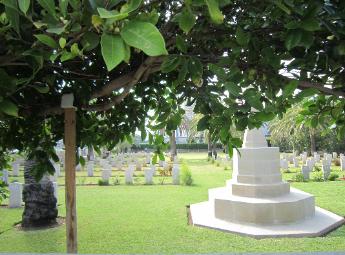

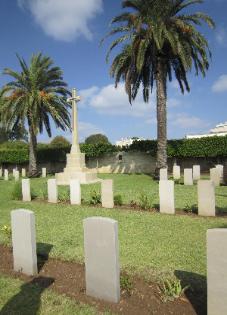



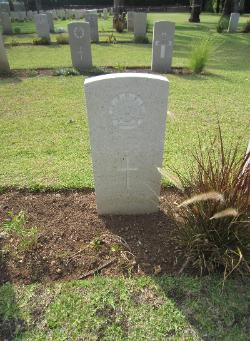
On each stone is engraved the name, rank, country of origin, emblem of the unit, age and the
date of death of the soldier, and an epitath. Click on the pictures to enlarge them
Sur cheque tombe sont graves le nom, le grade, le pays d'origine, le symbole du regiment, l'age
et la date du deces du soldat ainsiqu'une epitaphe. Cliquez sur les images pour les agrandir
date of death of the soldier, and an epitath. Click on the pictures to enlarge them
Sur cheque tombe sont graves le nom, le grade, le pays d'origine, le symbole du regiment, l'age
et la date du deces du soldat ainsiqu'une epitaphe. Cliquez sur les images pour les agrandir
A guard of honor and a flag ceremony at the memorial ceremony
of the Hero of Haifa. 2013
The city of Haifa was liberated from the Ottomans in September
1918. Indian light cavalry stormed the Turkish positions with
bayonets and swords. The soldiers who fell in the battle for the
liberation of Haifa are buried in the British military cemetery
located on Jaffa Road between the schwarma restaurants and the
Dolphin junction.
This historical event that ended four centuries of Turkish
domination in Haifa was commemorated 96 years after the
liberation of the city. Yigal Graber of the Haifa Historical Society,
said that on September 22, 1918, the British had received an aerial
reconnaissance false information indicating that the Turks were
leaving Haifa. The British were preparing to enter the city. In the
area of Balad Sheikh ( today Nesher ) they encountered heavy fire.
The British commander decided to send in Haifa an elite unit
consisting of two regiments of cavalry Ramahi Jodhpur and
Ramahi Mysore, who served in the British Army . One of the
officers commanding the Indian company, Major Dalfat Singh,
rushed courageously leading his men to the Ottoman positions in
the old train station (Haifa East) facing a heavy bombardment of
machine guns.
Major Singh was killed in the assault, but his troops were able to
defeat the barricaded Ottoman soldiers so that the road for the
liberation of the city was short. Major Singh was posthumously
awarded the title " Hero of Haifa " and a monument was erected
in Delhi, capital of India, where his memory is commemorated
every year.
Three years ago, the Historical Society of Haifa was informed that
a military ceremony in honor of " Hero of Haifa " ( as it is called
in India) is held each year on September 23th in Delhi. The
municipality approached the Indian embassy and offered to hold a
memorial service for the soldiers of the British military cemetery
in Haifa, where the soldiers killed in the battle for the liberation of
Haifa are buried. Indian Military attachés were moved and
accepted immediately. Since then, a memorial ceremony is held
every year on the nearest day to 23 September, the date of the
death of the " Hero of Haifa " for the liberation of the city.
The annual ceremony was held at the British military cemetery in
the presence of the General commander of the soldiers of the
UNDOF in the Golan Heights, General of the Indian Army, the
Indian Ambassador, the Embassy staff, the military attaché and
six members of India Parlement who came for the occasion,
representatives of the Israeli military forces who were invited and
the Deputy Mayor of Haifa,Hedva Almog .
Almog said that "Residents of Haifa will learn to recognize and
honor the heroic story of Major Singh, that will also be taught in
schools . Pupils will learn and the story be part of the official
history of Haifa. Haifa Mayor Yona Yahav said he would check
the possibility of creating a copy of the statue of the "Hero of
Haifa " in Delhi and erect it in one of the squares of the cemetery
in Haifa.
An honor guard of soldiers of the Indian Army serving in the
Golan Heights fired a salvo, played a bugle call, and the graves
were decorated with flowers
Translated from Ironet 2/10/2013
Pictures of the ceremony
of the Hero of Haifa. 2013
The city of Haifa was liberated from the Ottomans in September
1918. Indian light cavalry stormed the Turkish positions with
bayonets and swords. The soldiers who fell in the battle for the
liberation of Haifa are buried in the British military cemetery
located on Jaffa Road between the schwarma restaurants and the
Dolphin junction.
This historical event that ended four centuries of Turkish
domination in Haifa was commemorated 96 years after the
liberation of the city. Yigal Graber of the Haifa Historical Society,
said that on September 22, 1918, the British had received an aerial
reconnaissance false information indicating that the Turks were
leaving Haifa. The British were preparing to enter the city. In the
area of Balad Sheikh ( today Nesher ) they encountered heavy fire.
The British commander decided to send in Haifa an elite unit
consisting of two regiments of cavalry Ramahi Jodhpur and
Ramahi Mysore, who served in the British Army . One of the
officers commanding the Indian company, Major Dalfat Singh,
rushed courageously leading his men to the Ottoman positions in
the old train station (Haifa East) facing a heavy bombardment of
machine guns.
Major Singh was killed in the assault, but his troops were able to
defeat the barricaded Ottoman soldiers so that the road for the
liberation of the city was short. Major Singh was posthumously
awarded the title " Hero of Haifa " and a monument was erected
in Delhi, capital of India, where his memory is commemorated
every year.
Three years ago, the Historical Society of Haifa was informed that
a military ceremony in honor of " Hero of Haifa " ( as it is called
in India) is held each year on September 23th in Delhi. The
municipality approached the Indian embassy and offered to hold a
memorial service for the soldiers of the British military cemetery
in Haifa, where the soldiers killed in the battle for the liberation of
Haifa are buried. Indian Military attachés were moved and
accepted immediately. Since then, a memorial ceremony is held
every year on the nearest day to 23 September, the date of the
death of the " Hero of Haifa " for the liberation of the city.
The annual ceremony was held at the British military cemetery in
the presence of the General commander of the soldiers of the
UNDOF in the Golan Heights, General of the Indian Army, the
Indian Ambassador, the Embassy staff, the military attaché and
six members of India Parlement who came for the occasion,
representatives of the Israeli military forces who were invited and
the Deputy Mayor of Haifa,Hedva Almog .
Almog said that "Residents of Haifa will learn to recognize and
honor the heroic story of Major Singh, that will also be taught in
schools . Pupils will learn and the story be part of the official
history of Haifa. Haifa Mayor Yona Yahav said he would check
the possibility of creating a copy of the statue of the "Hero of
Haifa " in Delhi and erect it in one of the squares of the cemetery
in Haifa.
An honor guard of soldiers of the Indian Army serving in the
Golan Heights fired a salvo, played a bugle call, and the graves
were decorated with flowers
Translated from Ironet 2/10/2013
Pictures of the ceremony



Entrance to the cemetery. Indian Hindu and Muhammadan sections.
A register book is placed in the wall between the cross of sacrifice and the Indu plot.
L'entree du cimetiere, les parcelles Hindu et Mahometane.
Un registre est place dans le mur entre la croix du sacrifice et la parcelle des soldats des Indes.
A register book is placed in the wall between the cross of sacrifice and the Indu plot.
L'entree du cimetiere, les parcelles Hindu et Mahometane.
Un registre est place dans le mur entre la croix du sacrifice et la parcelle des soldats des Indes.




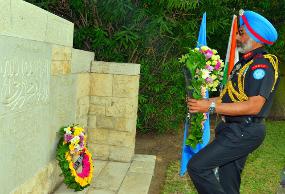




Major Iqbal Singh Singha, H.E. SinghaJaideep Sarkar, Hedva Almog
18/12/13 An Ottoman mural painting (3x10m) that
once belonged to Ottoman army officer Edip Kemal in
the Hotel Zahara Syria, has been revealed in a shop in
Haifa. It depicts scenes of WWI, in particular an air
attack by the British army against the Ottoman army
once belonged to Ottoman army officer Edip Kemal in
the Hotel Zahara Syria, has been revealed in a shop in
Haifa. It depicts scenes of WWI, in particular an air
attack by the British army against the Ottoman army

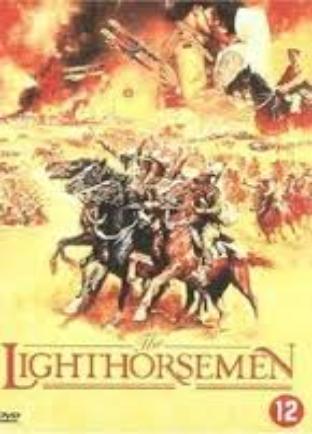
The light horsemen, film by Simon Wincer



